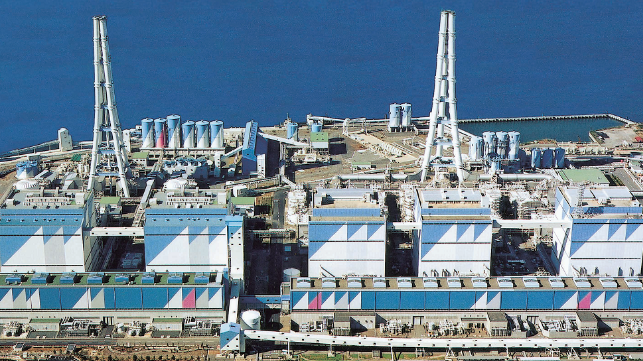JERA Tests Promising Marine Fuel as a Replacement for Coal

In a sign of potential supply challenges for the maritime industry, Japanese electrical utility JERA has launched a pilot project using one of shipping's most promising future fuels in a shoreside powerplant.
In collaboration with JERA and IHI Corporation, the Japanese government's New Energy and Industrial Technology Development Organization is underwriting a four-year ammonia trial at Hekinan coal-fired thermal power station. The early-stage engineering trial will gradually ramp up an ammonia mix ratio in one of the plant's five boiler units, and the partners will carefully evaluate the impact on equipment and emissions. The objective is to increase the rate of ammonia co-firing to a target of 20 percent by 2025, yielding potential CO2 reductions of up to 20 percent (depending upon the source of the ammonia).
Replacing an existing thermal coal powerplant with an efficient natural gas turbine powerplant typically yields carbon emissions reductions in the range of 50 percent, according to American engineering firm Parker Hannifin. Natural gas combined cycle powerplants have a significant efficiency edge over even the best coal-fired boiler units, and natural gas contains significantly less carbon than coal.
Japan's coal powerplants have taken on an increased role after the disaster at the Fukushima Daiichi nuclear powerplant in 2011, and Japanese utilities are planning to build nearly two dozen new thermal coal power generating units by 2025, despite climate targets. Japan's government has announced plans to allow coal plants with at least 43 percent thermal efficiency to continue operating past 2030; by comparison, the world's most efficient combined cycle natural gas powerplant - the Nishi Nagoya station in Japan - has a thermal efficiency of about 63 percent.
If executed as planned, JERA's transition to 20 percent ammonia co-firing would absorb a significant fraction of the global green-fuel industry's output. According to the Ammonia Energy Association, the entire output of the planned Australian Renewable Energy Hub (AREH) - a 2,500 square mile, $36 billion power station on some of the world's best wind and solar real estate - would supply less than half of Japan's coal-fired powerplants at a 20 percent co-firing ratio. If used exclusively to power vessels, AREH's output would be enough to fuel about 200 large container ships.

that matters most
Get the latest maritime news delivered to your inbox daily.
Ammonia may be one of the most promising low/no-carbon fuel sources for the maritime industry, as it has relatively high energy density and its production and transport are well-understood. However, it comes with known challenges. When it is made using renewable electricity (green ammonia), it requires vast quantities of power; when produced using fossil-fuel sources, it requires CO2 sequestration at an unprecedented industrial scale in order to generate a low-carbon product (blue ammonia).
Improvements in technology could alter this equation: cost and efficiency gains in green hydrogen production appear to be on the horizon, as well as new methods to extract hydrogen from natural gas via pyrolysis (for "turquoise" ammonia). On the consumption side, a transition to high-efficiency generating equipment - ammonia-powered fuel cells and ammonia-powered gas turbines - has the potential to reduce losses in energy utilization, stretching a finite resource.
